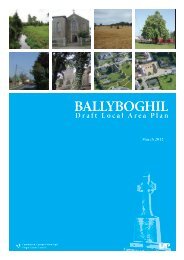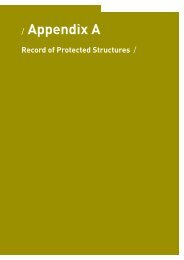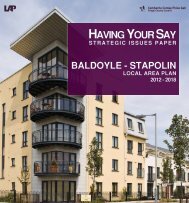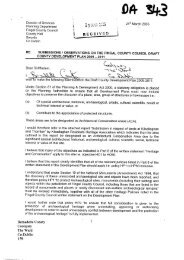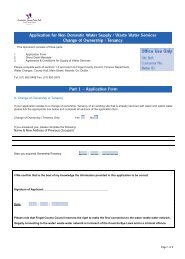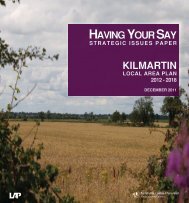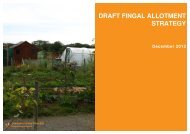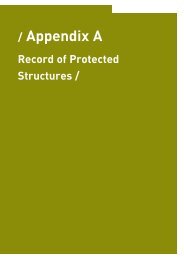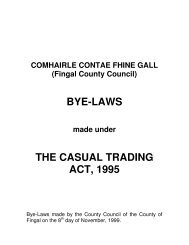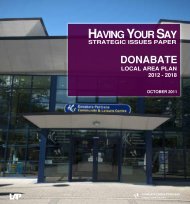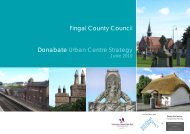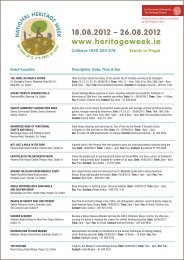DRAFT Malahide Historic Core ACA Statement of Character
DRAFT Malahide Historic Core ACA Statement of Character
DRAFT Malahide Historic Core ACA Statement of Character
Create successful ePaper yourself
Turn your PDF publications into a flip-book with our unique Google optimized e-Paper software.
MALAHIDE ARCHITECTURAL CONSERVATION AREA JUNE 2009<br />
<strong>DRAFT</strong> STATEMENT OF CHARACTER<br />
farm near <strong>Malahide</strong> at The Grange and Broomfield West. In 1170 MacTorkill surrendered<br />
to the Normans and was permitted to retire to <strong>Malahide</strong>. He rebelled the following year<br />
and was executed and his lands were granted by Henry II to a Norman knight Sir<br />
Richard Talbot, with the usual feudal privileges, as a reward for his “war like services”<br />
in the conquest <strong>of</strong> Ireland.<br />
Sir Richard Talbot built a motte and bailey castle and circa 1250 AD he built the first<br />
stone castle in <strong>Malahide</strong>. The estate was passed down through the male heirs <strong>of</strong> Sir<br />
Richard Talbot for over the next eight centuries and the castle was rebuilt, extended<br />
and remodelled during the successive generations. During the 1650s, the family’s<br />
estates were sequestered and granted to Cromwellian soldiers and adventurers.<br />
However the family recovered their lands in the subsequent decades. Notably the<br />
Talbot’s land holdings were not confiscated after The Battle <strong>of</strong> the Boyne in 1690<br />
although they supported the Jacobite side. When Lord Talbot de <strong>Malahide</strong> died in 1973<br />
the castle and estate were put up for sale and purchased by Dublin County Council.<br />
3.2 17th and 18th Century <strong>Malahide</strong><br />
The population in the town appears to have grown from approximately 100 to 200<br />
people in the 17 th century. The court and its <strong>of</strong>fices were stone built with slate ro<strong>of</strong>s<br />
and all the houses were thatched with mud walls. The town’s water supply, which was<br />
also a venerated holy well, known as St Sylvester’s Well was located at the centre <strong>of</strong><br />
the square at the intersection between Old Street and Railway Avenue. The one inn in<br />
the town was described as “a poor ordinary place”. <strong>Malahide</strong>’s safe harbour led the<br />
town to be known as one <strong>of</strong> the chief haven towns in Ireland. <strong>Malahide</strong> was also one <strong>of</strong><br />
only three settlements in North Dublin to achieve borough status in the 17 th century,<br />
the other settlements being Lusk and Swords.<br />
An unflattering account <strong>of</strong> the town given by John Dunton in 1699, an English<br />
bookseller records<br />
“It contains 30 ordinary huts in all, and not one without several little children who are<br />
sprawling about the fireplace (for there was but small appearance <strong>of</strong> a fire on it) like<br />
so many maggot’s on a dunghill in a summer’s day”<br />
<strong>Malahide</strong> developed around the castle and the Talbot family strongly influenced its<br />
development. In the 17th century there were two main areas <strong>of</strong> settlement within the<br />
area, <strong>Malahide</strong> Castle and one mile to the north, <strong>Malahide</strong> town.<br />
7 <strong>of</strong> 59




